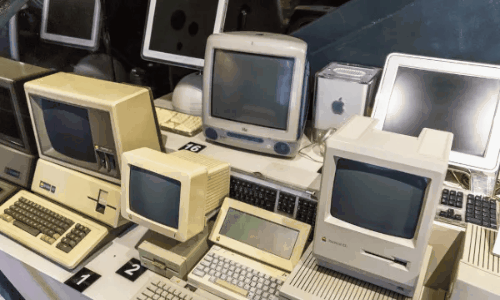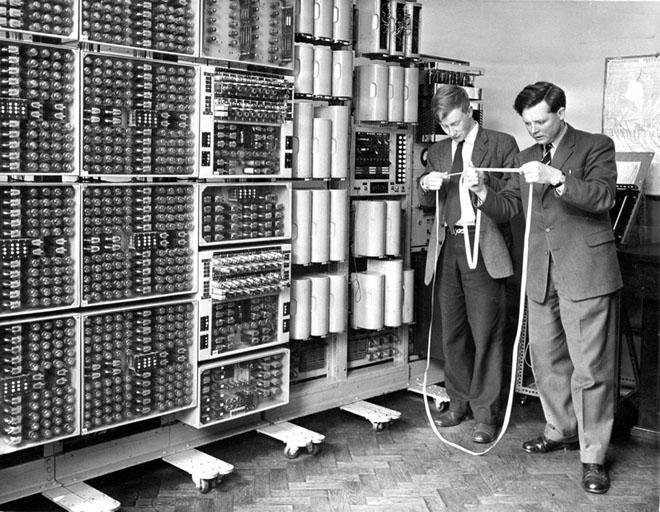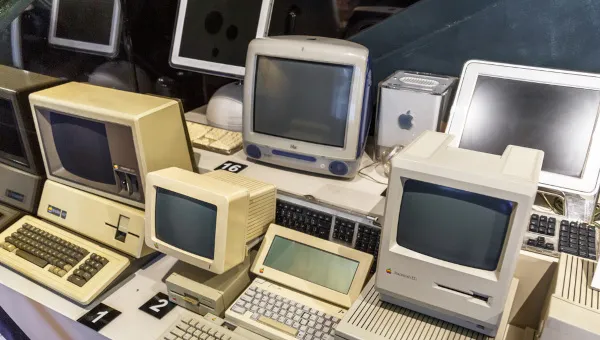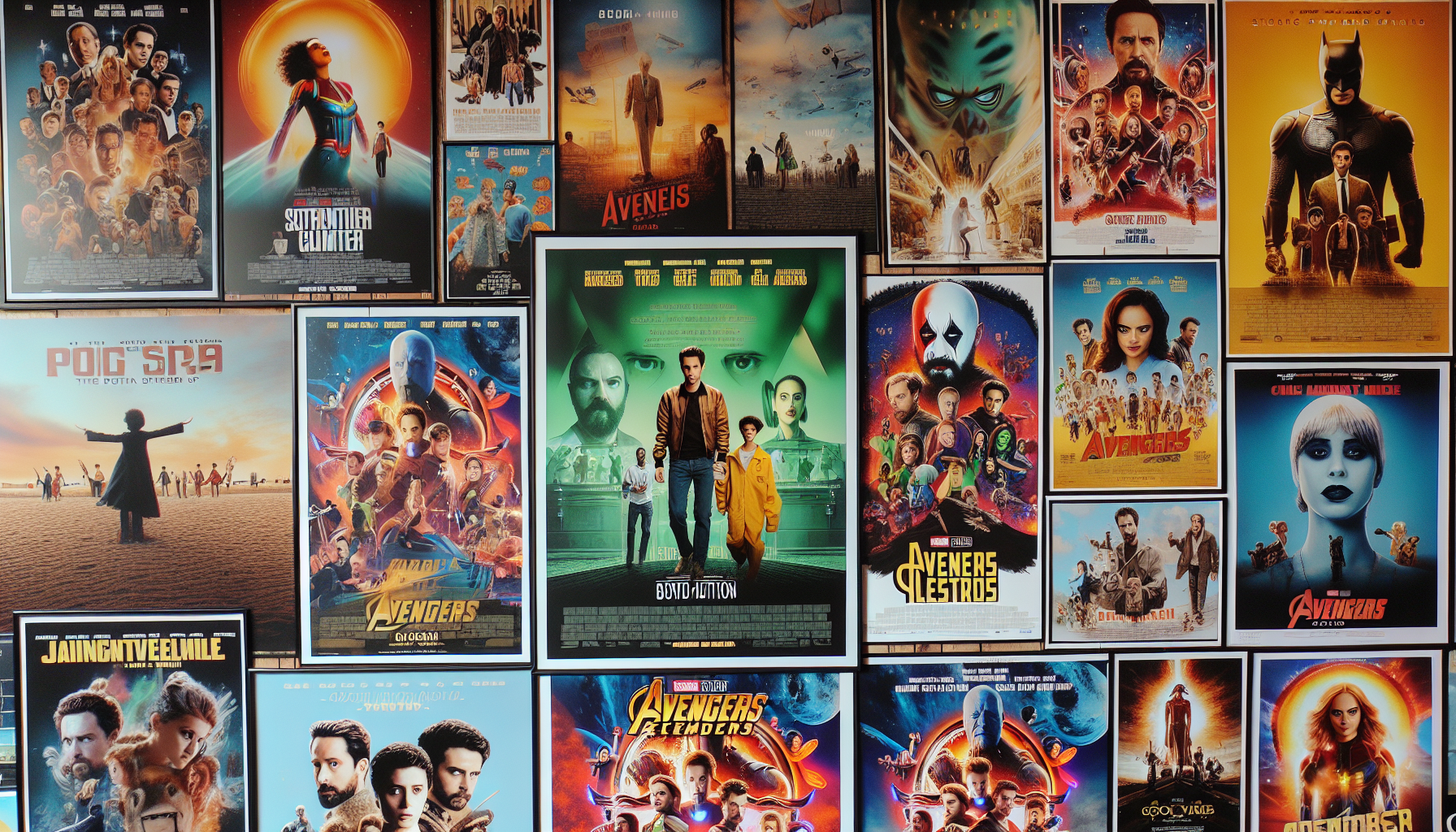Adverts
Throughout history, technological advancement has always been linked to human curiosity. But has every innovation that has ever existed made it to the present day?

Many civilizations, true “geeks” of their times, created technologies so amazing that, even with the limited resources available, they defied the laws of creativity and engineering. Some of these inventions, however, were left behind and forgotten by time. 🕰️
Adverts
This is a fascinating dive into the technological past, where we explore ingenious tools, gadgets and systems that were ahead of their time.
From machines that defied gravity to mechanisms that anticipated modern concepts, each discovery carries a story of innovation that deserves to be remembered.
Adverts
By uncovering these forgotten technologies, we also reflect on how creative thinking and ingenuity have shaped – and continue to shape – the world. Understanding the past can offer us valuable insights into the challenges of the future.
Get ready to explore science and technology from a new perspective, discovering inventions that prove that human genius has no limits. 🚀

The enigma of forgotten technologies: artifacts that shaped the geek imagination
The Beginnings of Retrofuturism: How the Past Imagined the Future
When we think about the roots of geek culture, we cannot ignore the technologies that, even before they became real, inhabited the collective imagination of writers, filmmakers and inventors. In the 50s and 60s, for example, retrofuturism took over science fiction, with its visions of a future where humans would dominate space and robots would be our faithful assistants. The curious thing is how these ideas were materialized in gadgets and technologies that today seem rudimentary to us, but which, at the time, were the pinnacle of innovation.
An iconic example? Isaac Asimov’s “thinking machines” and the central computers in works like “Star Trek.” While the fictional computers were gigantic and often visually exaggerated (with lots of flashing lights and blip-blop sounds), they reflected a very real human desire: to create artificial brains capable of processing information at superhuman speeds. In the 21st century, we may look back on these devices as the ancestors of our artificial intelligence systems and connected devices, but there’s no denying that the geeks of that era paved the way for what we have today.
Also, let's not forget the iconic "communicators" from series like "Star Trek", which directly inspired the creation of modern flip phones in the 90s. These fictional gadgets and their functionalities, which seemed absurd to the public at the time, are now something we carry in our pockets every day. 📱
Related articles:
The influence of retrofuturism on contemporary technology is a reminder that the past should not be forgotten. It bears the traces of early geek visions of a world that seemed distant but was in reality only decades away from becoming our new normal.

Entertainment's Technological Relics: Consoles and Devices That Changed Everything
Moving a little further along the geek timeline, we find another milestone that shaped nerd culture: the video game consoles and home entertainment devices that emerged between the 70s and 90s. These gadgets not only transformed how people played games and consumed media, but they also became objects of desire and status among geeks of the time.
Do you remember the legendary Atari 2600? It was a game-changer when it introduced the concept of interchangeable cartridges, allowing gamers to choose from a wide variety of titles. Before that, video games were often dedicated devices with just one or two built-in games. Not only did the Atari popularize home consoles, it also paved the way for giants like Nintendo and Sega to enter the market. 🎮
Another forgotten but revolutionary device was the LaserDisc. Launched in the 1970s, it promised superior image quality to VHS and paved the way for the future of optical discs, which would later evolve into DVD and Blu-ray. Although the LaserDisc never really took off in the mainstream, it was an important milestone in the development of home media technology. Many geeks of the time invested in this format, seeking the best possible image and sound experience for their favorite movies.
And we can't forget to mention Nintendo's Game Boy. Launched in 1989, it was a portable revolution that brought games into people's hands in ways never before imagined. Its simplicity and incredible catalog of games made it an icon, but its rudimentary technology, like the monochrome screen, is a reminder of how quickly things have evolved in the world of portable gaming.
These relics may seem outdated today, but each one represented an evolutionary leap that opened the door to innovations that shaped the geek universe as we know it.
The forgotten technologies that inspired generations of creators
The first steps of artificial intelligence in the geek imagination
Before Alexa, Siri, and ChatGPT took over our lives, the idea of artificial intelligence was largely confined to science fiction and experimental research. Movies, books, and TV shows from the 1970s and 1980s painted scenarios where intelligent machines played crucial roles in society, often shifting from being trusted allies to existential threats.
One of the most iconic examples comes from Stanley Kubrick’s classic “2001: A Space Odyssey.” HAL 9000, the supercomputer with a quiet voice and unsettling demeanor, was one of the first depictions of AI to capture the public’s imagination. Although HAL is a fictional figure, his creation was based on real-life debates about where automation and computing could take us. The impact of this character was so profound that many researchers admit to having entered the field of artificial intelligence thanks to him.
Furthermore, we cannot forget the first real attempts at creating AI in the 1980s, such as the “ELIZA” project. Although rudimentary and limited, ELIZA opened the door to the development of chatbots and virtual assistants. Even though its abilities were basic, it inspired an entire generation of geeks to dream of machines that could talk and interact with humans in a meaningful way.
Today, as we look back at these early forays into artificial intelligence, it's fascinating to see how what seemed like geek fantasy a few decades ago is now part of our daily routine. 🤖

The impact of analog devices on digital advancement
Before the absolute dominance of digital, the geek world was driven by analog devices that, in their own way, paved the way for the technological revolution we are experiencing today. These devices may seem outdated now, but their historical importance cannot be underestimated.
A classic example? Sony’s famous “Walkman.” Launched in 1979, it was the first device that allowed people to take their favorite music with them wherever they went. The concept of portability, which seems obvious today, was revolutionary at the time. The Walkman directly inspired the development of devices like the iPod and, eventually, the streaming services that dominate the music market today.
Another gadget worth mentioning is the Polaroid camera. Its ability to take photos instantly was magical for its time, making photography accessible and instantaneous. Polaroid’s practical and quick approach paved the way for digital cameras and, later, smartphones with their built-in cameras, which today are practically an extension of our bodies. 📸
These analog devices may seem outdated, but they represent the foundation upon which all of our digital technologies were built. After all, without the past, there is no future, and the geek legacy is deeply rooted in these forgotten inventions.
The Forgotten Virtual Worlds: Pioneers of Digital Universes
The first steps in MMORPGs and the creation of virtual communities
Before “World of Warcraft” dominated the MMORPG scene, there were digital universes that, while rudimentary, paved the way for the creation of expansive and immersive virtual worlds. One of the first and most influential was “MUD” (Multi-User Dungeon), released in the 1970s. These text-based games pioneered the creation of virtual communities where players could interact, form alliances and explore fictional worlds together.
While simple compared to today’s realistic graphics, MUDs introduced concepts like guilds, quests, and virtual economies. These elements, which are now standard in online games, were born in the command lines of these text-based worlds. It’s fascinating to think that what is visually stunning today began as textual descriptions typed into rudimentary terminals.
Another important milestone was “Ultima Online,” released in 1997. It introduced 2D graphics and a persistent world where players’ actions could have lasting impacts. This game was one of the first to show the potential of MMORPGs as a space for collaborative storytelling and social interaction.
These often overlooked virtual worlds were instrumental in shaping the way we interact in digital environments. They laid the foundation for the immersive experiences we enjoy today in games like Final Fantasy XIV and Elder Scrolls Online.
Social media before social media
Before the advent of Facebook, Twitter, and Instagram, geeks were already creating their own online communities on platforms like BBS (Bulletin Board Systems) and IRC (Internet Relay Chat). These rudimentary networks allowed like-minded people to connect, exchange ideas, and share files at a time when the internet was still young.
Bulletin boards, for example, were popular in the 1980s and functioned as discussion forums that could be accessed via dial-up connection. They were the precursors to modern social networking platforms and demonstrated how technology could bring people together from all over the world. IRC, in turn, introduced the concept of real-time chat, which would later evolve into the instant messaging and live chat we use today.
While these technologies are often overlooked, they pioneered the digital communities we consider essential today. Without them, it’s hard to imagine how social media would have evolved to become what it is today. 🌐
Conclusion
As we delve into the fascinating universe of forgotten technologies of geek civilizations, we realize how the past can surprise and inspire us. 🚀 The ingenuity and creativity of the people who came before us are proof that the desire to innovate is as old as humanity itself. Even though some of these technologies have been abandoned or surpassed, many of them were the pillars for the innovations that we consider indispensable today, such as computing, robotics and even artificial intelligence.
What’s more, exploring these creations is a unique opportunity to understand how ideas evolve over time and how even the smallest inventions can profoundly impact the future. 🕰️ It’s incredible to think that seemingly archaic concepts are actually the precursors to many of the modern devices we use every day. 🌐
Therefore, it is not just about remembering the past, but about valuing the technological legacies that shaped geek society. With this perspective, we can continue to innovate, learning from the mistakes and successes of our predecessors. Thus, diving into the past is not only a nostalgic trip, but also an invitation to create an even more promising future. 💡
Explore, get inspired and transform! After all, the future is built on the foundations of the past. ✨




